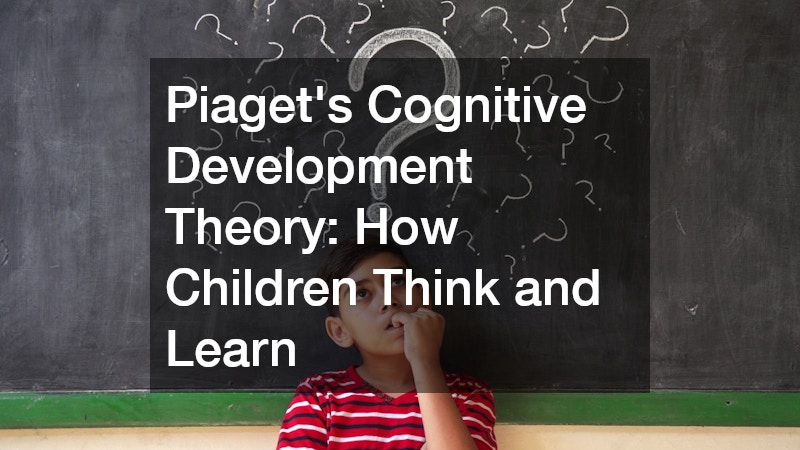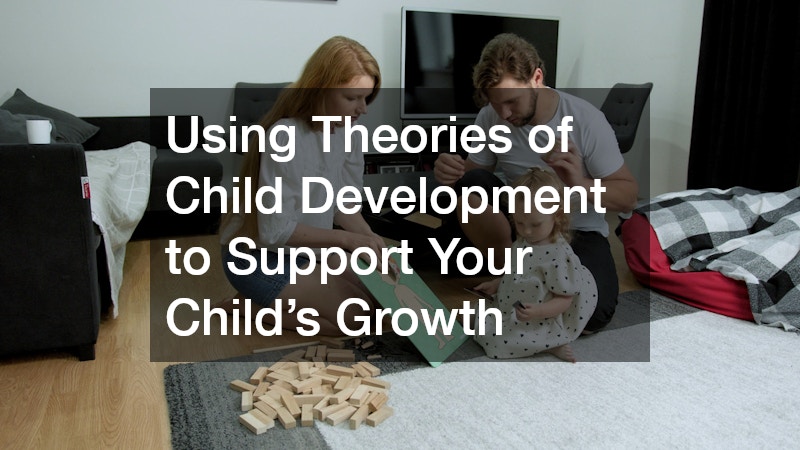
Raising children is one of the most rewarding—and sometimes overwhelming—journeys any parent can take. With every stage of your child’s growth, new questions arise: How do kids learn? Why do they behave the way they do? Are their emotional responses normal? Fortunately, child development theories provide insights that help parents make sense of their child’s behavior, learning patterns, and emotional needs. In this comprehensive guide, we’ll compare key theories of child development and explore how parents can use these frameworks to support their child’s well-being and growth.
What Are Theories of Child Development?
Theories of child development are structured explanations created by psychologists and educators to help us understand how children grow physically, emotionally, socially, and intellectually. These theories form the foundation of modern parenting practices, educational programs, and child psychology. When parents are aware of these models, they gain valuable insight into their child’s evolving needs, behaviors, and cognitive capabilities. This knowledge can enhance communication, reduce frustration, and foster more effective parenting strategies.
Most developmental theories focus on one or more areas:
- Cognitive development (thinking and learning)
- Emotional and social development (feelings, relationships)
- Psychosocial development (identity and personal growth)
- Behavioral development (habits and learned behaviors)
Let’s explore and compare some of the most influential theories that have shaped the way we understand child development.
Piaget’s Cognitive Development Theory: How Children Think and Learn

Jean Piaget, a Swiss psychologist, developed a groundbreaking theory that emphasizes how children’s thinking evolves through stages over time. His approach highlighted that children are not simply miniature adults but have their own unique ways of processing information at different ages.
Piaget’s Four Stages:
- Sensorimotor Stage (0-2 years): Learning through movement and sensory experiences
- Preoperational Stage (2-7 years): Engaging in symbolic play with limited logical thinking
- Concrete Operational Stage (7-11 years): Developing logical reasoning about concrete events
- Formal Operational Stage (12+ years): Beginning to think abstractly and hypothetically
Why it matters to parents: Understanding these stages helps parents tailor their expectations and communication. For instance, a preschooler may struggle to understand time or cause-and-effect concepts, so it’s more effective to use visual and hands-on learning methods.
Erikson’s Psychosocial Development Theory: Stages of Identity and Trust
Erik Erikson built upon traditional psychoanalytic ideas by emphasizing the emotional and social challenges individuals encounter throughout their lives. He proposed a model of psychosocial development that includes eight distinct stages, five of which occur during childhood and adolescence. At each stage, individuals face a specific conflict that, when successfully managed, contributes to the formation of a strong and balanced identity.
Key Childhood Stages in Erikson’s Theory:
- Trust vs. Mistrust (0-1 year old): When a child trusts the caregivers
- Autonomy vs. Shame/Doubt (1-3 years old): When a child develops a sense of independence
- Initiative vs. Guilt (3-6 years old): When a child tries new things
- Industry vs. Inferiority (6-12 years old): When a child forms a sense of competence
Why it matters to parents: Each stage emphasizes the emotional needs of the child. Offering praise for efforts, encouraging autonomy, and creating a safe emotional space allows children to build confidence and resilience.
Vygotsky’s Sociocultural Theory: The Power of Social Interaction
Lev Vygotsky believed that learning and development are deeply embedded in social and cultural contexts. Unlike Piaget, who focused on individual discovery, Vygotsky emphasized the role of social interactions, especially with more knowledgeable others like parents and teachers, in shaping a child’s understanding of the world.
Core Concepts:
- Zone of Proximal Development (ZPD): The difference between what a child can do alone and what they can achieve with help
- Scaffolding: Support provided by adults or peers that gradually fades as the child becomes more capable
- Cultural tools: Language and symbols that shape cognitive development
Why it matters to parents: This theory highlights the importance of engaging directly with your child in meaningful activities. It shows how shared tasks, conversation, and guided play are essential to helping children master new skills and ideas.
Skinner’s Behaviorist Theory: Learning Through Consequences
B.F. Skinner, a renowned American psychologist, developed the concept of operant conditioning to explain how behavior is influenced by its outcomes. His theory suggests that actions resulting in favorable consequences are more likely to be repeated, while those leading to unfavorable results tend to decrease in frequency over time. This approach emphasizes the role of reinforcement and punishment in shaping and modifying behavior patterns.
Principles of Skinner’s Theory:
- Positive reinforcement: Encouraging behavior by offering rewards
- Negative reinforcement: Removing an unpleasant condition to increase behavior
- Punishment: Applying consequences to reduce unwanted behavior
Why it matters to parents: This approach provides tools for shaping behavior without resorting to harsh punishment. For instance, consistent rewards for good behavior and ignoring tantrums can be more effective than yelling or scolding.
Attachment Theory: Building Strong Emotional Bonds
Attachment theory, introduced by John Bowlby and expanded by Mary Ainsworth, focuses on the bonds between children and their primary caregivers. It suggests that early emotional connections have long-lasting impacts on a child’s mental and emotional health.
Attachment Styles:
- Secure attachment: The child feels safe and confident
- Avoidant attachment: The child avoids closeness due to emotional distance
- Anxious attachment: The child is clingy and anxious about separation
- Disorganized attachment: The child displays unpredictable behavior
Why it matters to parents: Consistent, loving, and responsive caregiving helps children feel safe, secure, and understood. These early bonds set the stage for healthy self-esteem and relationship-building throughout life.
Comparing Theories of Child Development: Which One Is Right?
It’s natural for parents to wonder which theory is the most accurate. However, the real value lies in understanding how each theory contributes to a fuller picture of your child’s development. Each model offers insights into different aspects—thinking, feeling, behavior, and social learning.
| Theory | Focus | Key Benefit for Parents |
| Piaget | Cognitive Stages | Helps set realistic learning expectations |
| Erikson | Emotional & Social Growth | Builds empathy and support at each stage |
| Vygotsky | Social Interaction | Encourages guided learning and engagement |
| Skinner | Behavior | Supports positive discipline strategies |
| Bowlby | Emotional Bonds | Emphasizes love and consistency |
Takeaway: Rather than viewing these theories as competing, it’s better to see them as complementary. Together, they provide a more comprehensive understanding of how children grow and thrive.
Using Theories of Child Development to Support Your Child’s Growth

Once you understand these frameworks, you can use them to create more effective parenting strategies. Practical application makes a real difference in how children feel supported and guided.
- Set Age-Appropriate Expectations (Piaget)
- Choose toys and tasks that match your child’s cognitive stage
- Be patient when teaching new concepts
- Encourage Independence (Erikson)
- Allow kids to try new things and make mistakes
- Offer choices to build decision-making skills
- Engage in Guided Play (Vygotsky)
- Play together and ask exploratory questions
- Break down tasks into manageable steps
- Reinforce Positive Behavior (Skinner)
- Celebrate small achievements
- Use routines and praise to shape behavior
- Be Emotionally Available (Bowlby)
- Make time for one-on-one bonding
- Be a consistent and comforting presence
These daily actions provide the structure, support, and emotional nourishment children need to flourish.
How Theories of Child Development Shape Child Psychology Today
Modern child psychology integrates many of these theories into a holistic approach to therapy, education, and parenting support. Professionals often combine insights from multiple models to assess children’s emotional, social, and intellectual growth.
Applications in Child Psychology:
- Therapy: Techniques may blend cognitive-behavioral principles (Skinner) with emotional development goals (Erikson)
- Education: Lesson plans use scaffolding (Vygotsky) and developmental readiness (Piaget)
- Family Support: Parenting workshops often address attachment patterns (Bowlby)
Why this matters for parents: By understanding how these theories influence professional practices, you can better advocate for your child’s needs. Whether you’re meeting with teachers, pediatricians, or therapists, you’ll be equipped to ask informed questions and participate actively in your child’s developmental journey.
The Role of Play in Developmental Theories
Play is central to almost every theory of child development. Piaget saw it as essential to cognitive exploration, while Vygotsky viewed it as a vehicle for social and language development. Even Erikson emphasized that playful activities help children assert their initiative. From building blocks to imaginative role-playing, each form of play supports brain development, emotional regulation, and creativity. As a parent, creating a play-rich environment is one of the most effective ways to support growth across multiple domains.
Theories of Child Development and Milestone Tracking
Many developmental theories are foundational to modern milestone charts used by pediatricians and educators. Understanding these benchmarks can help you spot delays or identify giftedness early on. Piaget’s cognitive stages help define age-appropriate learning goals, while Erikson’s model can explain behavioral changes. Instead of using milestones as a rigid checklist, use them as a flexible guide. Every child grows at their own pace, and these theories help contextualize that uniqueness within a healthy developmental range.
Parenting Styles Through the Lens of Developmental Theories
Your parenting style also intersects with developmental theory. Authoritative parenting, characterized by warmth and structure, aligns with secure attachment and positive behavioral reinforcement. Permissive or authoritarian styles may hinder emotional growth or autonomy. By reflecting on how you communicate, discipline, and show affection, you can fine-tune your approach to support your child’s needs more effectively. These adjustments don’t require perfection—just awareness, patience, and consistency.
Final Thoughts: Knowledge Is a Parent’s Superpower
No single theory holds all the answers to raising a child, but together, they provide a well-rounded map. Think of them as lenses through which you can view your child’s behaviors and needs more clearly. Whether you’re calming a crying baby, helping a school-age child with homework, or guiding a teen through emotional ups and downs, these theories equip you with insights that lead to wiser, more empathetic parenting decisions.
By comparing the most influential theories of child development, you gain tools to understand, nurture, and support your child at every stage. And in doing so, you help them grow into confident, well-rounded individuals.